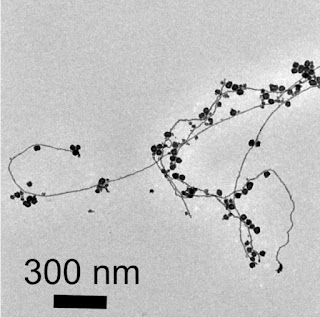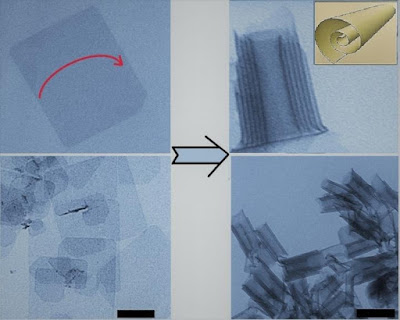A novel method for making gold Nanoparticles in water
"Having the capacity to do responses in water implies you don't need to stress over pollution. It's green science," said Zare, who is the Marguerite Blake Wilbur Professor in Natural Science at Stanford.
Honorable metal
Gold is known as a honorable metal since it is moderately lifeless. Not at all like base metals, for example, nickel and copper, gold is impervious to consumption and oxidation, which is one reason it is such a famous metal for gems.
Around the mid-1980s, nonetheless, researchers found that gold's compound lack of approachability just shows everywhere, or perceptible, scales. At the nanometer scale, gold particles are artificially receptive and make astounding impetuses. Today, gold nanostructures have discovered a part in a wide assortment of utilizations, including bio-imaging, sedate conveyance, poisonous gas recognition and biosensors.
As of recently, in any case, the main solid approach to make gold nanoparticles was to join the gold antecedent chloroauric corrosive with a decreasing specialist, for example, sodium borohydride.
The response exchanges electrons from the decreasing specialist to the chloroauric corrosive, freeing gold particles all the while. Contingent upon how the gold molecules at that point cluster together, they can frame nano-estimate dots, wires, bars, crystals and then some.
A spritz of gold
As of late, Zare and his associates pondered whether this gold-creating response would continue any distinctively with little, micron-measure beads of chloroauric corrosive and sodium borohydide. How extensive is a microdroplet? "It resembles pressing a scent bottle and out spritzes a fog of microdroplets," Zare said.
From past tests, the researchers realized that some concoction responses continue substantially quicker in microdroplets than in bigger arrangement volumes.
Without a doubt, the group watched that gold nanoparticle developed more than 100,000 times speedier in microdroplets. In any case, the most striking perception came while running a control test in which they supplanted the decreasing operator - which customarily discharges the gold particles - with microdroplets of water.
"Much to our bewilderment, we found that gold nanostructures could be made with no additional lessening operators," said think about first creator Jae Kyoo Lee, an exploration relate.
Seen under an electron magnifying instrument, the gold nanoparticles and nanowires seem intertwined like berry bunches on a branch.
The unexpected discovering implies that unadulterated water microdroplets can fill in as microreactors for the generation of gold nanostructures. "This is yet more proof that responses in water beads can be in a general sense not quite the same as those in mass water," said think about coauthor Devleena Samanta, a previous graduate understudy in Zare's lab and co-creator on the paper.
In the event that the procedure can be scaled up, it could kill the requirement for conceivably lethal diminishing operators that have hurtful wellbeing symptoms or that can dirty conduits, Zare said.
It's as yet misty why water microdroplets can supplant a lessening specialist in this response. One probability is that changing the water into microdroplets incredibly expands its surface region, making the open door for a solid electric field to shape at the air-water interface, which may advance the arrangement of gold nanoparticles and nanowires.
Related Conference:
Dubai, UAE
August 27-28, 2018
Source: Story Source:
Materials provided by Stanford University



Comments
Post a Comment